Imagine a world swathed in mystery and teeming with extraterrestrial oddities, chronicled by creatures that haunt your dreams and echo through the annals of cinema history. This eerie realm isn’t as far-fetched as one might think—it’s the backbone of classic horror and sci-fi films that have both terrified and captivated audiences for generations.
For the celluloid aficionado, exploring the behind-the-scenes machinations of these legendary movies can be as thrilling as the films themselves. This deep dive into the clandestine birth of cinema’s most enduring flicks will not only regale you with trivia but also paint a vivid picture of the ingenuity and tenacity of the visionaries who gave life to these timeless tales.
The Making of Monsters: The Genesis of Iconic Creatures
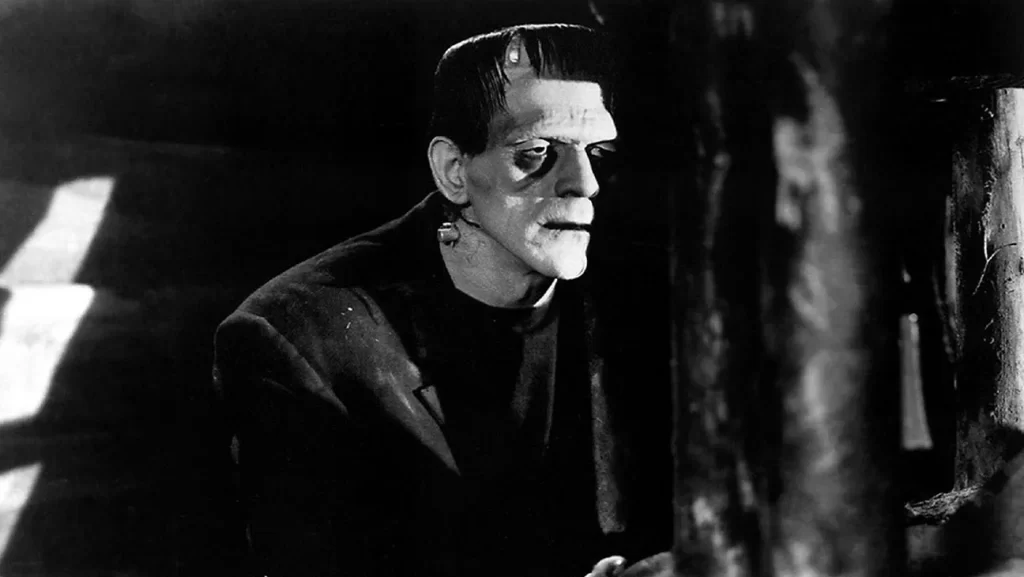
Frankenstein (1931) – How Boris Karloff Crafted a Legend
James Whale’s “Frankenstein” remains a totem of the Universal Horror classics, largely thanks to Boris Karloff’s haunting depiction of the creature. What many don’t realize is that Karloff endured hours of makeup and prosthetics, including a prosthetic that covered half his head, which would come off at night like a second skin. It was this mask—a conglomeration of cotton, collodion, fixative, and black grease paint—that wouldn’t fully solidify, leading to agonizing headaches and a grueling evening routine. Despite the discomfort, Karloff’s stoicism contributed to the image that has become synonymous with the name “Frankenstein.”
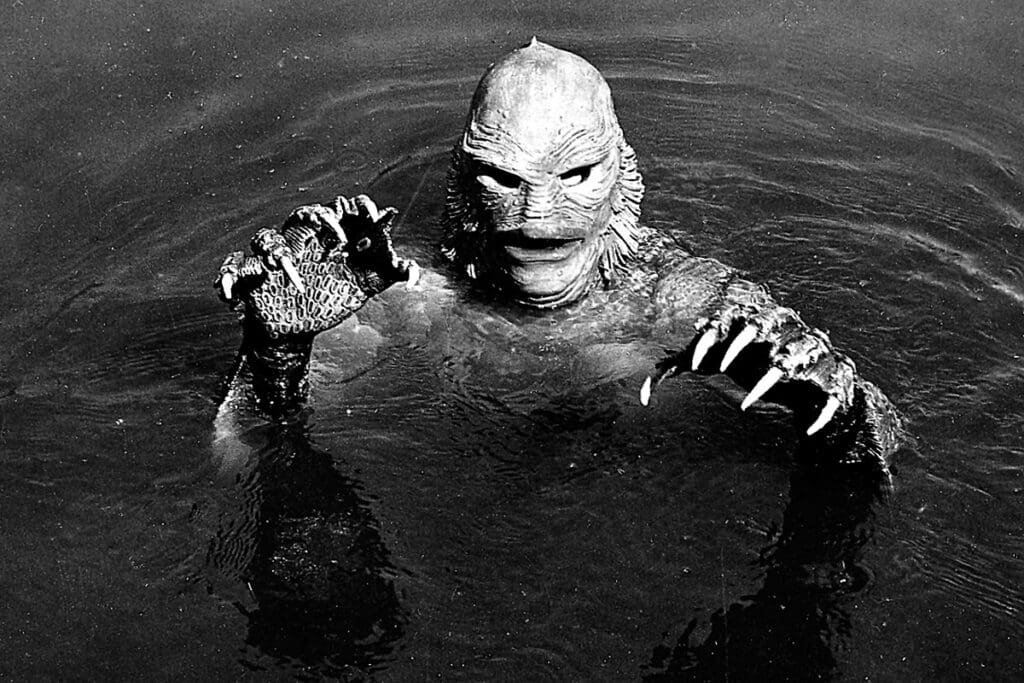
Creature from the Black Lagoon (1954) – The Underwater Ballet
Before “The Shape of Water” won hearts and accolades, there was another tale of love and isolation beneath the waves: “Creature from the Black Lagoon.” The amphibious antagonist, played by Ricou Browning underwater, captured hearts and minds by showcasing an underwater finesse that still impresses. His balletic movements were crafted in Silver Springs, Florida, by Browning and two other stuntmen who enhanced the creature’s eerie elegance, which, combined with the naturist setting and creative cinematography, resulted in sequences that stand the test of time.
Unearthing Unlikely Heroes: Cast and Crew Anecdotes
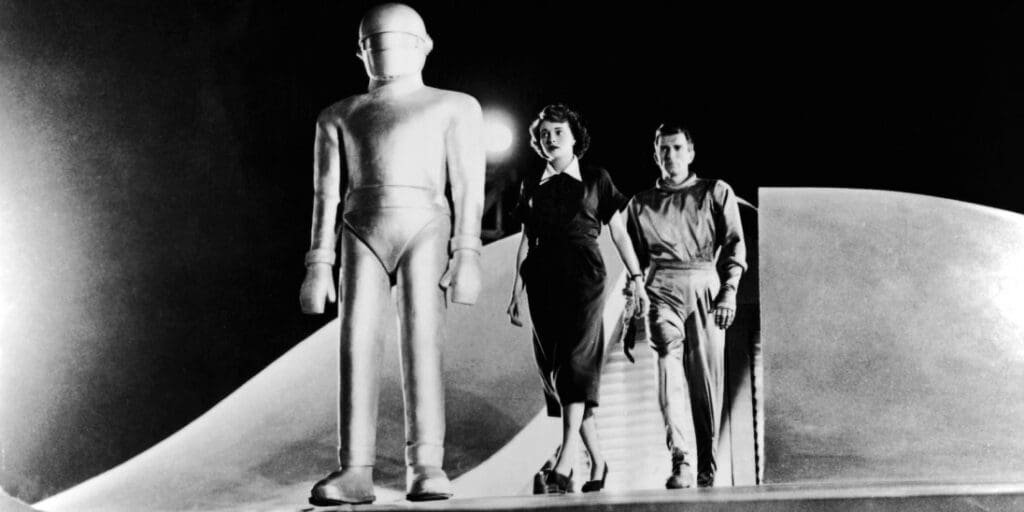
The Day the Earth Stood Still (1951) – The Robot Suit’s Secret
The iconic robot, Gort, waist-high but imbued with an ethereal presence, was brought to life by Lock Martin, a man towering over seven feet. The ten-thousand-dollar suit could only be entered through the back, requiring Martin to be carried inside—this, despite it being designed for his dimensions. The suit, made from a combination of aluminum, latex, and plaster, was unventilated and inflexible, expressing the dedication that extended from cast to costume.
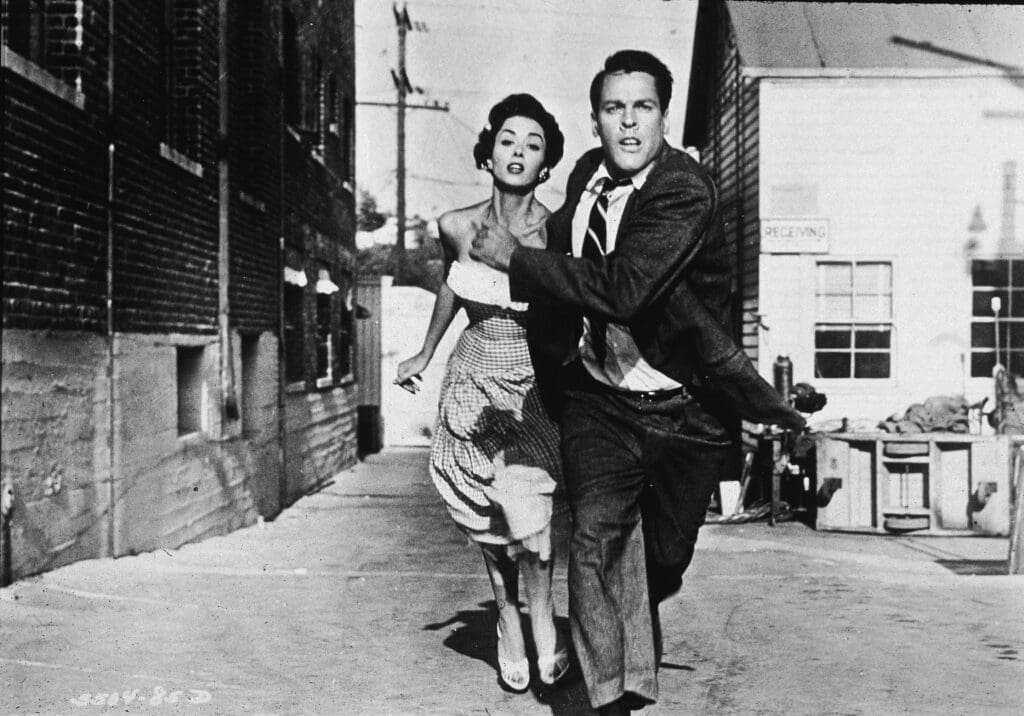
Invasion of the Body Snatchers (1956) – A Lesson in Low-Budget Creativity
For a film with a budget as sterile as the pods that replicate the townsfolk, “Invasion of the Body Snatchers” relied on ingenious but economical set design. The metaphorical pods that hatch doppelgangers—performed concrete hoppers—were painted to evoke both extraterrestrial oddity and the suggested horror of the situation. The cavernous interior was then achieved through the careful manipulation of actors to give a sense of depth to the otherwise two-dimensional constructs.
The Score of Scares: Music and Sound Design
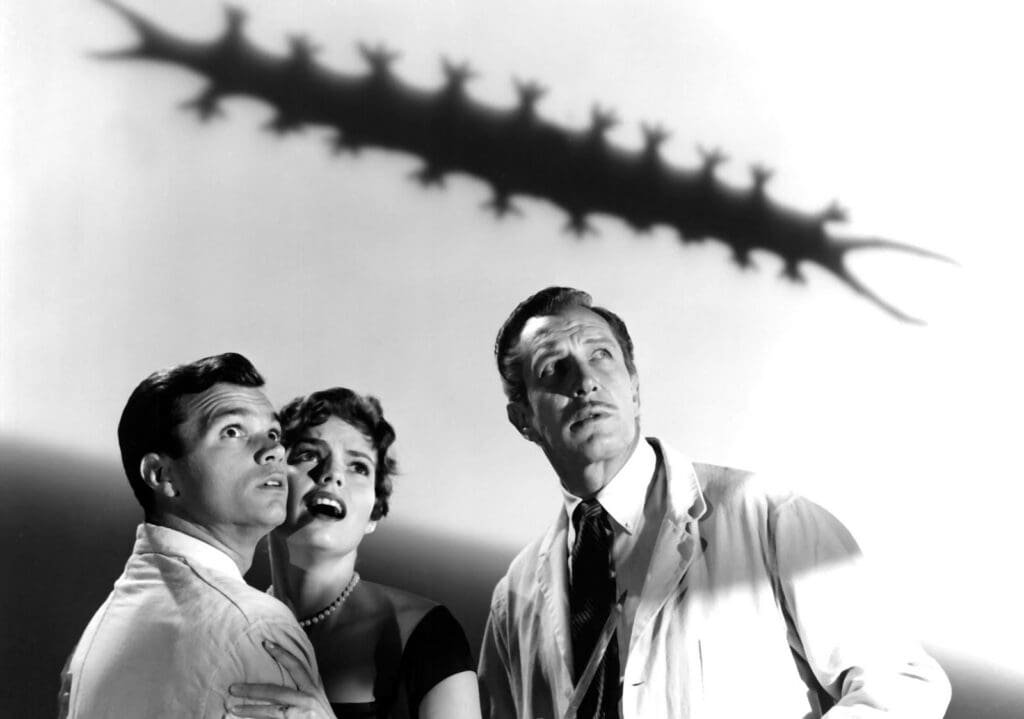
The Tingler (1959) – Percepto and Psychological Warfare
“Have you ever felt the tingle?” This question, coupled with director William Castle’s infamous Percepto gimmick, made “The Tingler” as much about audience interaction as fear itself. The Percepto device—essentially vibrating motors wired under select theater seats—acted as an electrifying, if gimmicky, means of immersion, amplifying the film’s nervous tension as the tingler seizes its victims. But beyond the buzz, the film boasted the first use of LSD on screen and featured innovative sound design, including a sequence where all sound drops off, letting the lead character’s heartbeats fill the void, heightening the tension in a way that hitherto had been purely psychological.
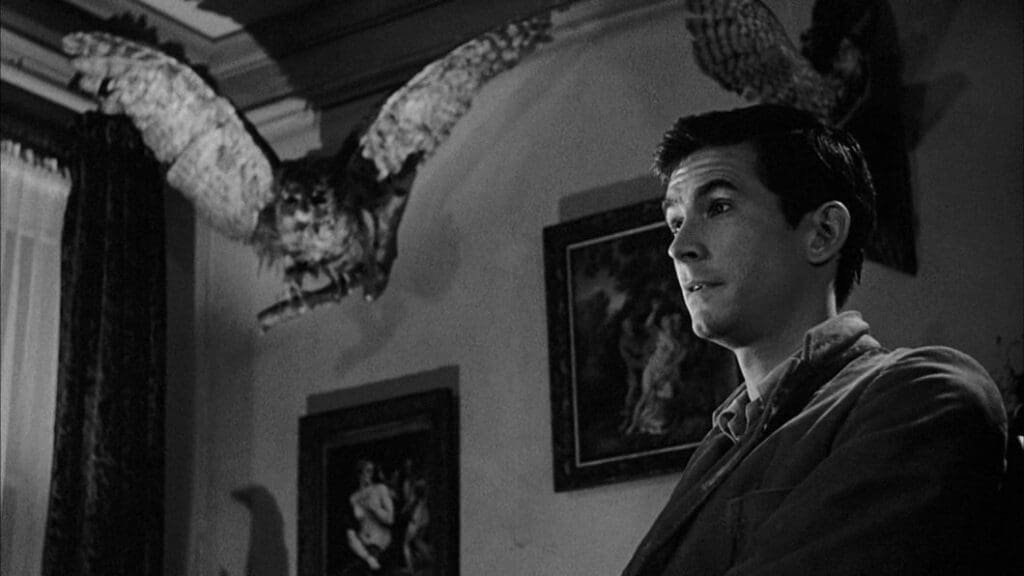
Psycho (1960) – The Harrowing Symphony of Strings
Perhaps no soundtrack is as synonymous with terror as the screeching violins that punctuate the infamous shower scene in “Psycho.” Bernard Herrmann’s composition, which eschewed brass and winds for a string orchestra, was essential to creating an atmosphere Hitchcock described as “pure film.” The discordant and rapid tempo of the ‘stab’ notes mirrored the on-screen violence, contributing to a psychological haunting long after the credits rolled.
Cutting Room Conundrums: Special Effects and Editing
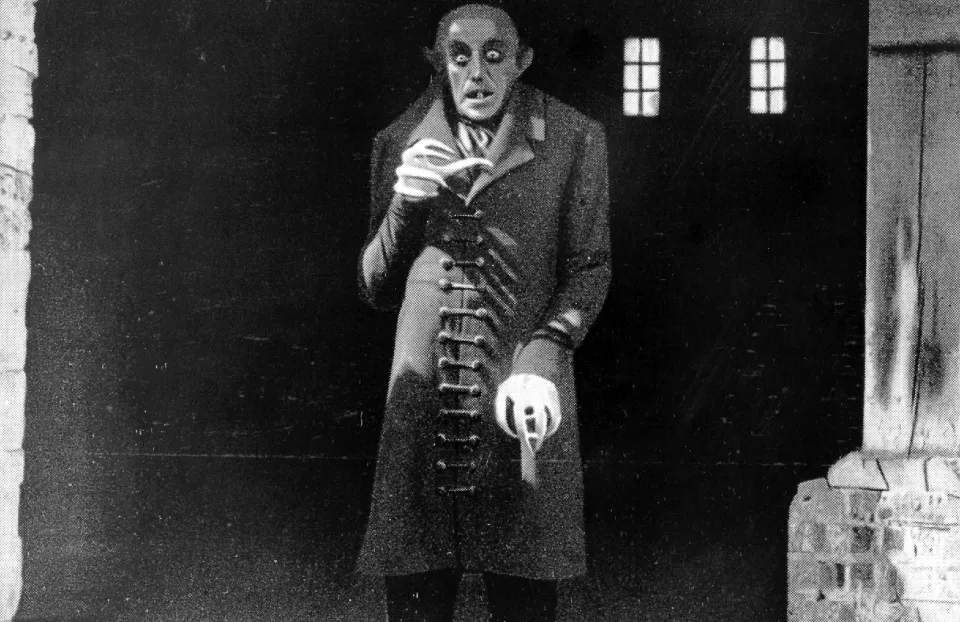
Nosferatu (1922) – Shadow and Subterfuge
F.W. Murnau’s “Nosferatu” was a tale born of necessity and legal swindling—unable to secure the rights to Dracula, the names were changed but the essence remained. What truly set this silent film apart, however, were the special effects that painted Count Orlok as the very embodiment of the nocturnal and nefarious. The eerie stillness of the shipboard scene, with Orlok’s looming silhouette, has become a trademark of the genre, and it was a potent blend of matte shots and set design, with shadows cast both by design and by chance, that created a naturalistic yet otherworldly sense of place and dread.
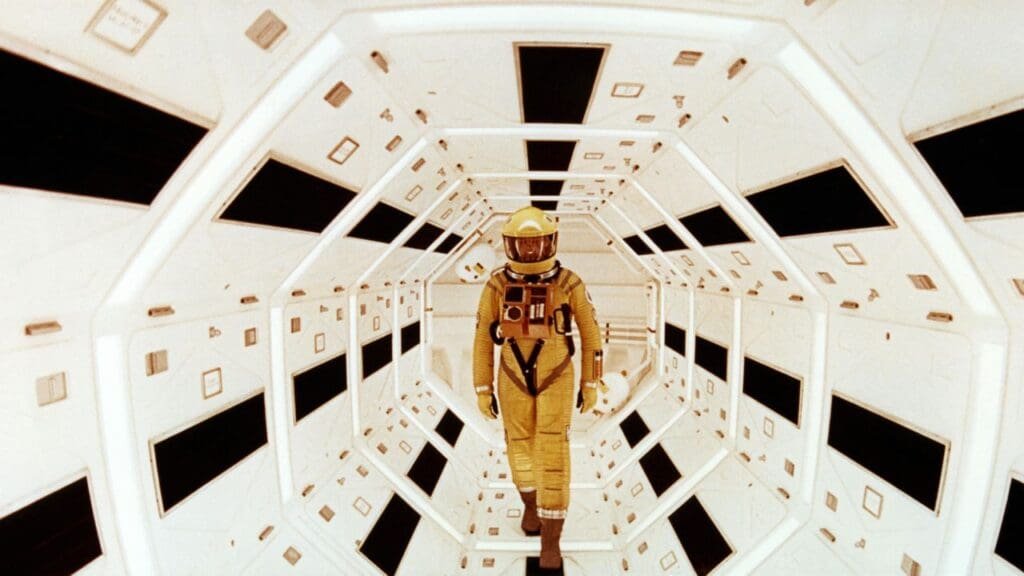
2001: A Space Odyssey (1968) – The Star Child’s Strange Journey
Stanley Kubrick’s magnum opus traveled through eons and space, requiring visual effects that could scarcely be described as traditional. The Star Gate sequence, a psychedelic rush of color and movement, was crafted using a custom-built slit-scan technique, typically used in photography, then applied to moving images with stunning results. “2001” remains a benchmark for special effects, renowned for its ability to inspire a sense of awe and unmistakable wonder that even modern CGI struggles to replicate.
Conclusion: A Final Frontier of Filmic Frights
The annals of horror and sci-fi moviemaking are stamped with innovation, resourcefulness, and the esprit de corps necessary to bring the most outlandish imaginings to life. Whether it’s the indomitable spirit of Boris Karloff, the resourceful artistry of a studio system navigating stringent budgets, or the avant-garde techniques of a Kubrick, our engagement with these classics yields not just anecdotes, but wisdom for those navigating the vanishing point of the human imagination.
Drawing back the curtain on these cinematic spectacles only serves to deepen our appreciation for the genre and instill a sense of kinship with the intrepid souls who, with a dash of madness and a measure of method, spun these celluloid nightmares and voyages of interstellar wonder. As you rewatch these classics, bear in mind the labor and love that went into crafting them, and visualize the shadowy figures behind the cameras, whispering the enchantments and engineering the astonishments that have etched themselves into the collective unconscious.
Ready to dive deeper into the mystical realms?
 Explore more captivating content like this by checking out our blog post “A Bloody Good Time: Exploring Vampire Lore from Around the World.” Uncover the enchanting tales and intriguing folklore that will leave you spellbound. Click HERE to continue your journey.
Explore more captivating content like this by checking out our blog post “A Bloody Good Time: Exploring Vampire Lore from Around the World.” Uncover the enchanting tales and intriguing folklore that will leave you spellbound. Click HERE to continue your journey.











